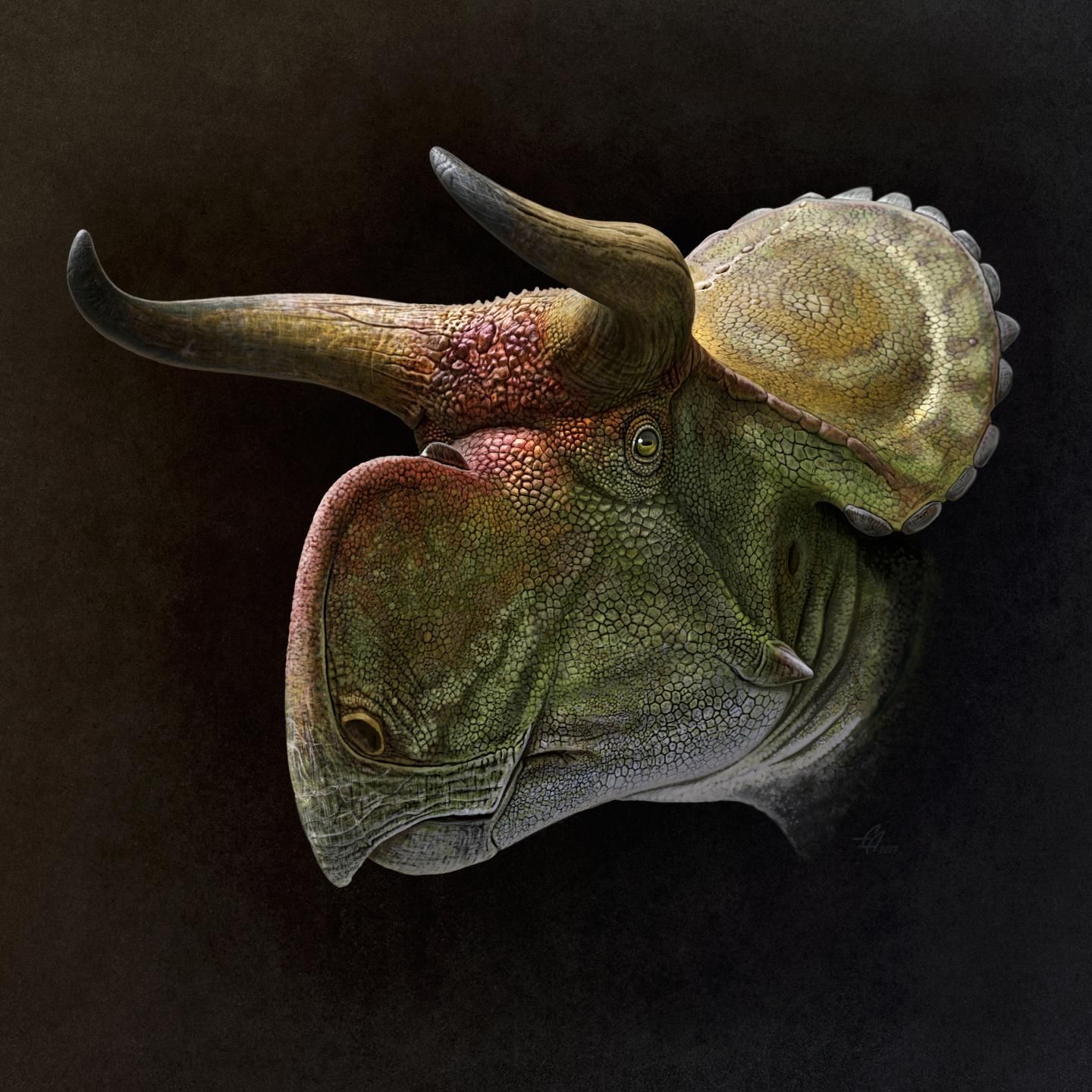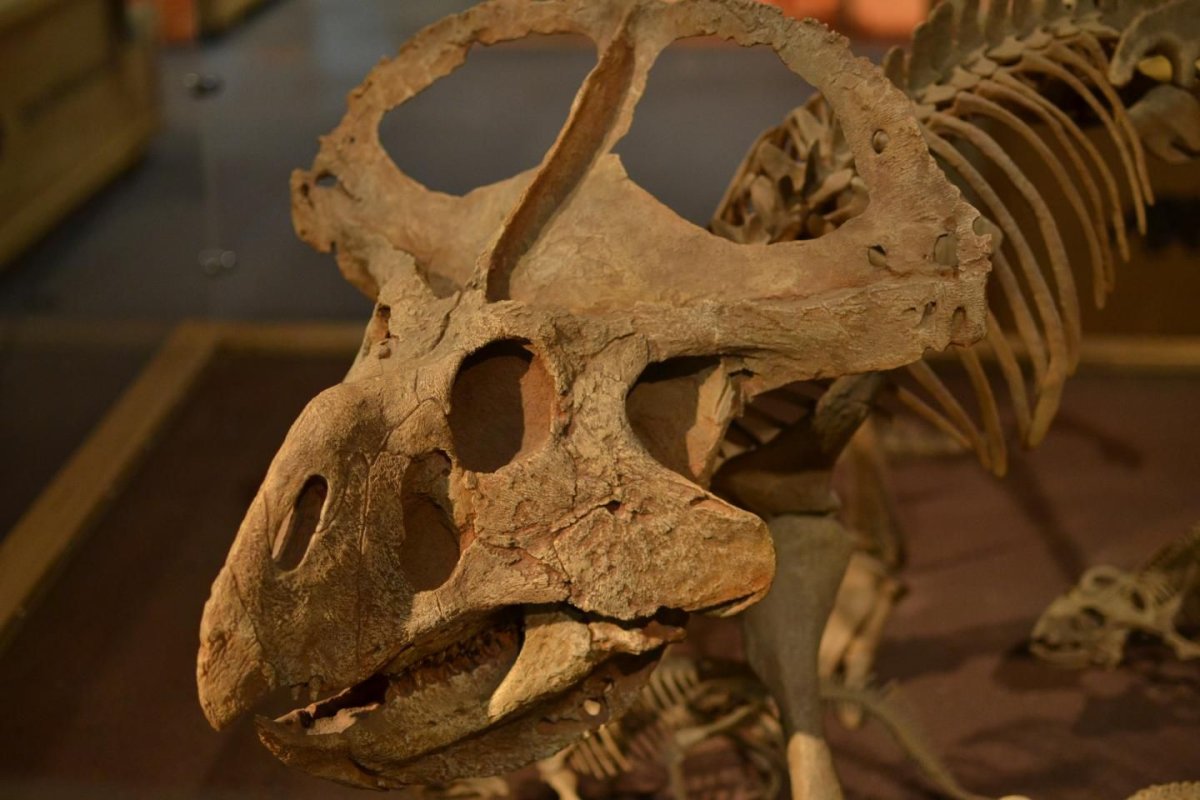
Triceratops are famed for the huge bony frills and horns on their heads. But why do the gentle giants wear such imposing accessories?
Scientists used to think this armor helped the huge herbivores avoid cross-species breeding. Now, evidence points to a different explanation: sexual selection—the horns and frills were built to attract, not repel, suggests research published in Proceedings of the Royal Society B.

Different species roaming the same ground may evolve features to tell each other apart, preventing them from breeding across species lines and giving birth to unfit offspring. Researchers wanted to know if this was behind the extravagant frills and horns of certain dinosaurs.
Read more: Solenodon: This Bizarre Venomous Mammal Survived the Asteroid That Killed the Dinosaurs
The team studied the patterns of ornamental horns and frills in 46 species of horned dinosaurs (ceratopsians), including the triceratops. They found no significant differences in these ornamental patterns between species that lived together and those that lived apart.
They also discovered the horns and frills seemed to evolve much more quickly than others. Big and burdensome, the embellishments are costly to grow and maintain. This, the researchers said, suggests a strong selective pressure.
The study builds on previous research suggesting one horned dinosaur—protoceratops—may have evolved frills under sexual selection. Now, researchers think this could be the case across the whole horned group.
"Modern computer models have suggested that sexual selection can promote rapid speciation, adaptation, and extinction," Andrew Knapp, doctoral student at Queen Mary University of London and lead author of the study, said in a statement. "We have shown that species recognition, one of the commonest explanations, is unlikely to be responsible for the diversity or origin of ornamentation in this group."
Read more: The Chicxulub Asteroid Impact that Killed the Dinosaurs Also Created Ocean Eruptions on the Other Side of the World
Just like a peacock's exquisite tail feathers, the frills and horns of a dinosaur are "advertising their quality or genetic make-up," Knapp told the BBC.

Sexual selection might not be the only driver of horny ornamentation, Darla Zelenitsky from the University of Calgary, Canada, who was not involved in the study, told the BBC. "Some of these ornaments were also likely used at times for defence against predators or, to some extent, for recognition of members of different species, but these were apparently not the primary driver in their evolution."
If sexual selection is indeed behind ornament evolution in horned dinosaurs, this kind of research can help scientists figure out its effects across "potentially huge timescales," Knapp said.
"In our world of increasing pressure on the natural world," he added, "These predictions may have important consequences for conservation and the fate of living things everywhere.
Uncommon Knowledge
Newsweek is committed to challenging conventional wisdom and finding connections in the search for common ground.
Newsweek is committed to challenging conventional wisdom and finding connections in the search for common ground.
About the writer
Katherine Hignett is a reporter based in London. She currently covers current affairs, health and science. Prior to joining Newsweek ... Read more
To read how Newsweek uses AI as a newsroom tool, Click here.








